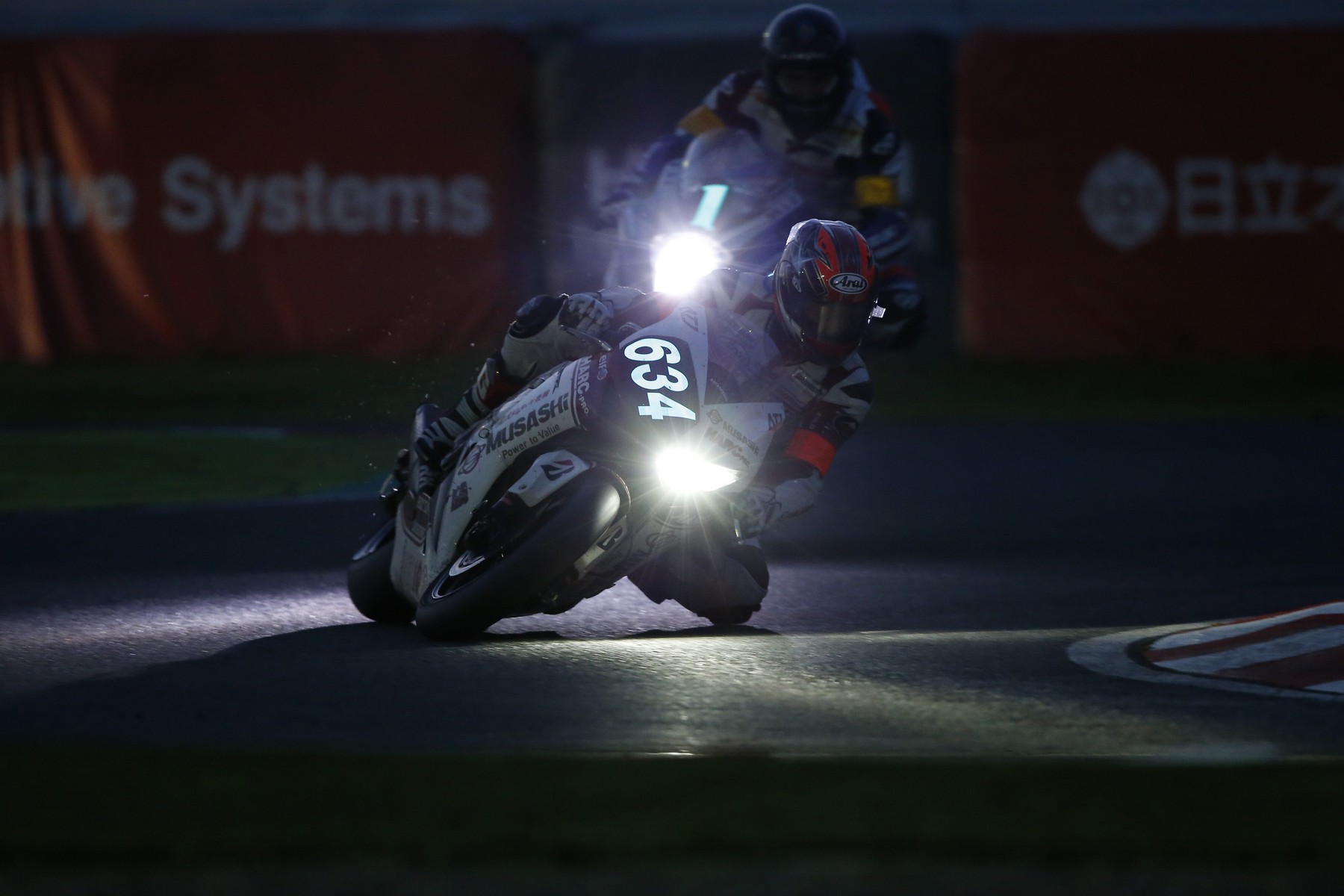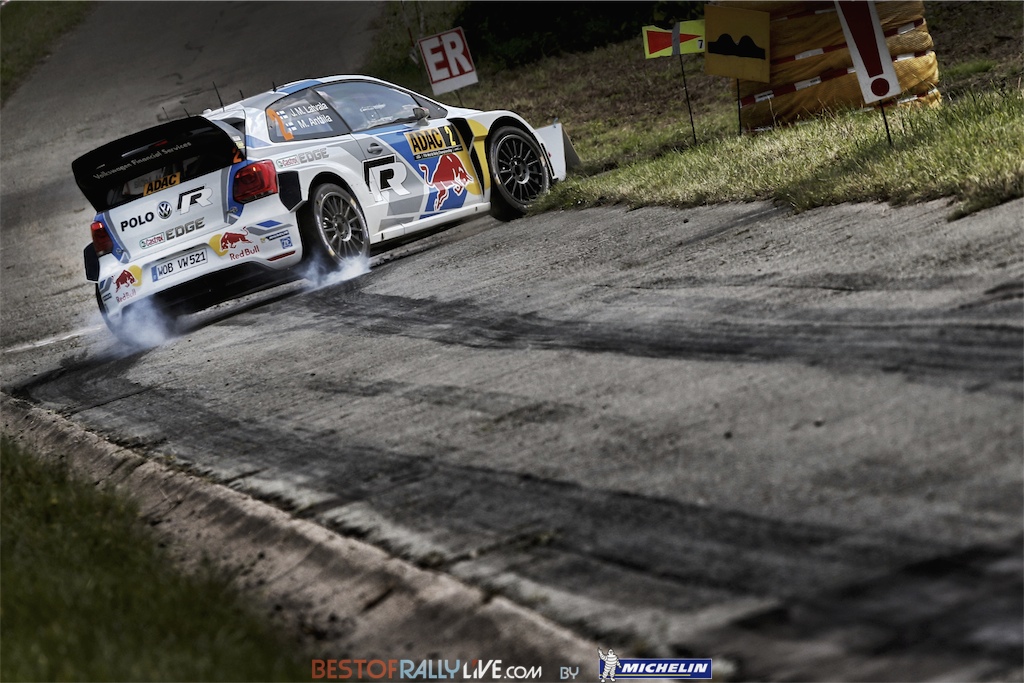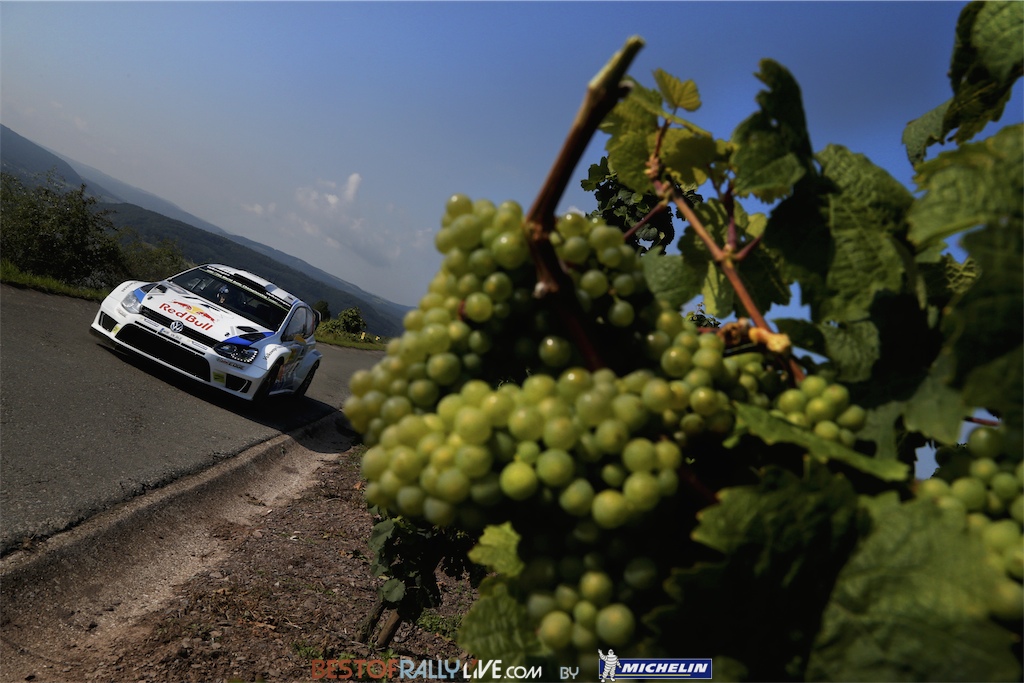SRC Kawasaki a décroché la meilleure moyenne en 1.27.466 à l’issue de la première séance d’essais qualificatifs des 8 Heures d’Oschersleben. L’équipage de la Kawasaki n°11 devance le YART 07 et Honda Racing. La meilleure performance individuelle est signée Bastien Mackels au guidon de la BMW stock n°13 de Penz 13 en 1.26.743.
En signant le meilleur temps de leur série respective, Grégory Leblanc (1.26.918) et Fabien Foret (1.27.058) ont permis au SRC Kawasaki de s’emparer de la pole provisoire avec une moyenne d’1.27.467. Matthieu Lagrive, de retour après sa chute lors du warm-up des 8 Heures de Suzuka, a bouclé son tour le plus rapide en 1.28.424.
Relégué à 0.153 seconde, le YART 07 se classe deuxième avec une moyenne d’1.27.619. Broc Parkes a signé le deuxième temps de sa session en 1.26.988. Encore en phase d’apprentissage, Michael Laverty n’a réalisé qu’1.28.250.
Malgré la chute de Julien Da Costa qui a nécessité la neutralisation de la séance par drapeau rouge à cinq minutes du drapeau à damier, Honda Racing pointe à la troisième place en 1.27.673. Très homogènes, les trois pilotes ont réalisé des chronos similaires, 1.27.505 pour Da Costa, 1.27.668 pour Gimbert et 1.27.847 pour Freddy Foray.
Le GMT 94 est quatrième à seulement 0.002 seconde d’Honda Racing. David Checa, Kenny Foray et Mathieu Gines sont crédités d’un temps moyen d’1.27.675.
En signant la meilleure performance individuelle de cette première séance qualificative en 1.26.743, Bastien Mackels hisse la BMW stock de Penz13 à la cinquième position au général et première machine de la catégorie avec une moyenne d’1.27.822. Seuls trois pilotes sont descendus en dessous de la barre d’1.27, Mackels, Leblanc et Parkes.
Le SERT (1.27.980) se classe sixième. Comme lors des essais libres en début d’après-midi, seulement 0,5 seconde sépare les six premières équipes.
Le YART (1.28.271), National Motos (1.28.311), Team Bolliger Switzerland (1.28.500) et Team R2CL (1.28.578) complètent le Top 10.
Le Junior Team Suzuki LML, onzième au général, pointe à la deuxième place en Stock (1.28.718) devant le Qatar Endurance Racing Team (1.28.738).
La seconde séance d’essais qualificatifs est prévue demain à partir de 13h45, à suivre surwww.motoracinglive.com.
SRC Kawasaki claimed the fastest ‘average’ time in the first qualifying session for the 8 Hours of Oschersleben. The three riders of the N°11 Kawasaki (1m27.466s) finished clear of their YART 07 and Honda Racing rivals, but the best individual lap was the work of Bastien Mackels on Penz 13’s stock BMW (1m26.743).*


SRC Kawasaki’s Grégory Leblanc (1m26.918s) and Fabien Foret (1m27.058s) topped their respective sessions to put their team on pole position with an average time of 1m27.467s, while Matthieu Lagrive – who is back after his warm-up injury at Suzuka – posted a 1m28.424s.
Second-placed YART 07 (+0.153s) secured an average of 1m27.619s and Broc Parkes was the second fastest rider in his session (1m26.988), but Michael Laverty (1m28.250s) is still familiarising himself with the track.
A fall for Julien Da Costa brought the session to halt with five minutes remaining but Honda Racing is still third (1m27.673s) thanks to very similar times from its nicely-balanced trio (Da Costa: 1m27.505s / Gimbert: 1m27.668s / Freddy Foray: 1m27.847s).
GMT 94 follows in fourth spot, just 0.002s short of Honda Racing after David Checa, Kenny Foray and Mathieu Gines produced an average of 1m27.675s.
The fastest man on the track today was Bastien Mackels who recorded a personal best of 1m26.743s to put Penz 13’s stock BMW in fifth place overall and at the top of its class with an average of 1m27.822s. Only three riders lapped in less than 1m27s, namely Mackels, Leblanc and Parkes.
SERT (1m27.980s) was sixth and, as was the case this morning, the top six were covered by just half a second.
The top 10 was rounded off by YART (1m28.271s), National Motos (1m28.311s), Team Bolliger Switzerland (1m28.500s) and Team R2CL (1m28.578s).
Junior Team Suzuki LML (1m28.718s) is 11th overall and second in the Stock class ahead of Qatar Endurance Racing Team (1m28.738s).
Qualifying 2 will start tomorrow (Friday) at 1:45pm and you will be able to follow the action live atwww.motoracinglive.com.



